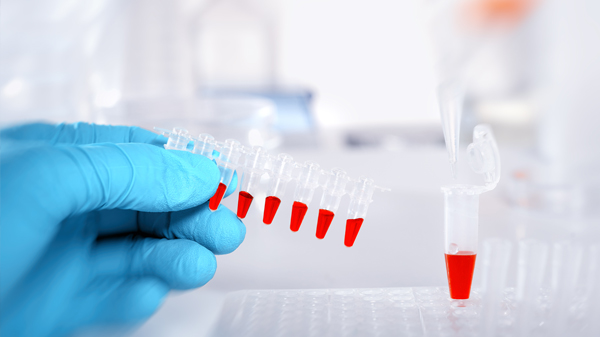
In many neurodegenerative diseases, the search for biomarkers has been driven by an extensive investigation and characterisation of the disease itself, as well as diseased tissue.
Due to the examination of post-mortem brain tissue in Parkinson’s disease (PD) research, relevant molecular pathways and genes that have allowed for targeted therapies, development of animal models, and new drug delivery systems have been identified.

These targeted strategies have identified many biomarker candidates that are being actively evaluated for their potential as different types of Parkinson’s disease biomarkers. The following is the first of a 2-part series on the role of biomarkers in Parkinson’s disease.
Pathological process apparently occurs long before clinical expression
Parkinson’s disease is a progressive, neurodegenerative condition, phenotypically characterized by akinesia, resting tremor and muscular rigidity. This “classical” clinical expression is a consequence of complex pathophysiological processes in the substantia nigra (SN), leading to intraneural accumulation of alpha-synuclein (a-syn), thus forming so-called “Lewy bodies” and eventually degeneration and loss of dopaminergic neurons1.
However, it appears that this pathological process occurs long before clinical expression, as nearly 50-60% of dopaminergic neurons are destroyed within SN before the appearance of motor symptoms. In addition to typical motor symptoms, there are several nonmotor symptoms such as constipation, depression, lack of smell sense and rapid eye movement sleep behaviour disorders (RBD) frequently present in Parkinson’s disease, before the onset of the classical motor symptoms. Whereas the first three symptoms are sensitive yet not specific to PD, RBD is now accepted as the most specific phenotype of the PD premotor phase with an associated risk of more than 80% of patients converting to PD, or dementia with Lewy bodies (DLB) or less frequently into multiple system atrophy (MSA)2.
Disease-modifying therapy could be helpful during long prodromal period in Parkinson’s disease
The average latency between onset of RBD and occurrence of parkinsonian motor symptoms is 12–14 years3, making the premotor period quite long. The pathogenic process that causes Parkinson’s disease is presumed to be underway during the premotor phase, involving regions of the peripheral and central nervous system in addition to the dopaminergic neurons of the SN4. Thus, this prodromal period provides a pivotal temporal window during which disease-modifying therapy could be administered to prevent or delay the development and progression of disease5.
Neuroinflammation may play key role in development of new Parkinson’s disease therapies
An emerging picture is one of a vicious cycle in which a-syn aggregation and mitochondrial dysfunction exacerbate each other, which could explain why these cellular changes are observed together in degenerating neurons in Parkinson’s disease. As a result of oxidative stress, disruption of Ca homeostasis, abnormal kinase activity and interaction with misfolded a-syn accumulation, neuroinflammation associated with T-cell infiltration and glial cell activation is becoming the salient feature of Parkinson’s disease7. Neuroinflammation is playing the vital role in degeneration of dopaminergic neurons8, which might be of great importance in development of new therapies in Parkinson’s disease research.
Nearly one-quarter of Parkinson’s patients are wrongly diagnosed in the early stage
Clinical diagnosis of Parkinson’s disease in daily practice is often based on physician’s experience and impression rather than stringent use of standard clinical diagnostic criteria such as the UK Parkinson’s Disease Society Brain Bank (UKPDSBB) criteria or recently published MDS diagnostic criteria. In fact, diagnosis of PD in the early stage has been problematic, as nearly one-quarter of patients are wrongly diagnosed, even in specialised centres. The most common misclassifications in clinicopathological series are MSA, progressive supranuclear palsy (PSP) and, less frequently, corticobasal degeneration. In clinically-based Parkinson’s studies, common errors relate to essential tremor, drug-induced parkinsonism and vascular parkinsonism9. Source data verification in various multicentre Parkinson’s clinical trials has shown low concordance of existing diagnosis with requested criteria.
Low diagnostic accuracy highlights need for Parkinson’s diagnostic tests and biomarkers
The translation process from physician-based diagnosis of PD into scientific diagnostic criteria used in multicentre clinical studies in Parkinson’s disease is difficult, often impossible. Moreover, the diagnostic accuracy at first visit is only slightly above 80%, as shown by a meta-analysis of eleven studies assessing a UKPDSBB-based clinical diagnosis against post-mortem pathological examination as the gold standard10. Such findings highlight the need for diagnostic tests and biomarkers to enhance diagnostic confidence in early disease, or to eventually diagnose PD in its prodromal stages11. The suitable biomarker would allow treatment with putative neuroprotective agents to begin long before the significant and irreversible loss of neurons, and would enable the assessment of disease modification in individuals receiving treatment12.
It is unclear why candidate drugs that successfully demonstrate therapeutic effects in animal models or drug discovery fail to show disease-modifying effects in clinical trials. To overcome this hurdle, patients with homogeneous pathologies should be detected as early as possible. The Biomarkers Definitions Working Group13 has defined a biomarker as “a characteristic that is objectively measured and evaluated as an indicator of normal biological processes, pathogenic processes or pharmacological responses to a therapeutic intervention.” Parkinson’s disease biomarkers can be categorised as genetic, biochemical and imaging. The utility of either single or group biomarkers are limited, but when combined and considered collectively, biomarkers for Parkinson’s disease may be more useful.
Contact Worldwide Clinical Trials
Part 2 of this blog series examines the strengths and weaknesses of current biomarkers in Parkinson’s disease. For immediate information about Parkinson’s disease clinical trials, please contact Worldwide Clinical Trials or learn more about our Parkinson’s disease research.
References
- Babic T, The Role of Biomarkers in Parkinson’s Disease. Journal for Clinical Studies, 2017;9(3).
- Iranzo A, Fernández-Arcos A, Tolosa E, et al.: Neurodegenerative disorder risk in idiopathic REM sleep behavior disorder: study in 174 patients. PLoS One. 2014;9(2).
- Postuma RB, Aarsland D, Barone P, et al. Identifying prodromal Parkinson’s disease: pre-motor disorders in Parkinson’s disease. Mov Disord 2012; 27: 617–26.
- Kalia LV, Lang AE. Parkinson’s disease. Lancet 2015; 386: 896–912.
- Siderowf A, Lang AE. Premotor Parkinson’s disease: concepts and definitions. Mov Disord 2012; 27: 608–16.
- Bose A, Beal MF. Mitochondrial dysfunction in Parkinson’s disease. J. Neurochem. 139 (Suppl. 1), 216–231 (2016).
- Moehle MS, West AB. M1 and M2 immune activation in Parkinson’s disease: foe and ally? Neuroscience 2015: 302:59–73.
- Hirsch EC, Vyas S, Hunot S. Neuroinflammation in Parkinson’s disease. Parkinsonism Relat Disord. 2012;18:S210–S2.
- Tolosa E, Wenning G, Poewe W. The diagnosis of Parkinson’s disease. Lancet Neurol. 2006:5, 75–86 (2006).
- Rizzo G et al. Accuracy of clinical diagnosis of Parkinson disease: a systematic review and meta-analysis. Neurology 2006:86, 566–576.
- Poewe W et al. Parkinson’s disease. Nature Reviews 2017:3:17013.
- Miller DB, O’Callaghan P. Biomarkers of Parkinson’s disease: Present and future. Metabolism 2015:64:40-46.
- Biomarkers Definitions Working Group. Biomarkers and surrogate endpoints: preferred definitions and conceptual framework. Clin Pharmacol Ther. 2001; 69:89–95.


